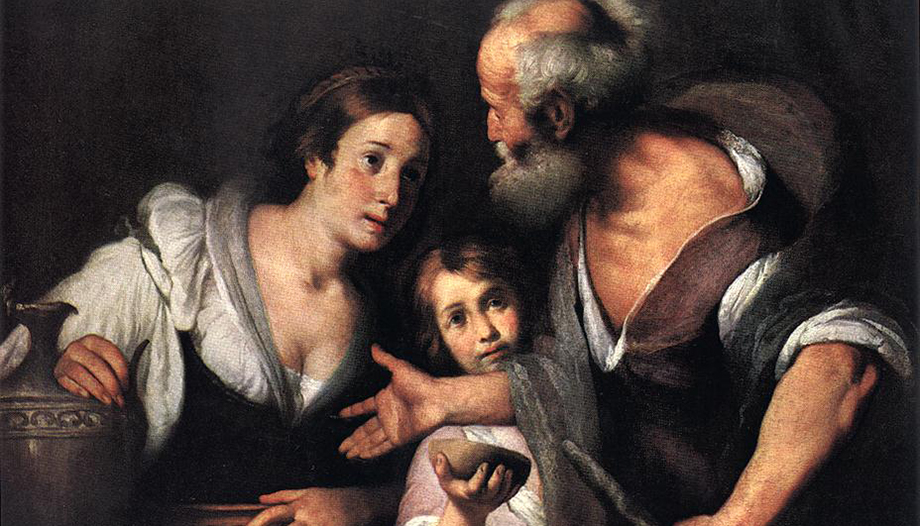Jesus teaches in the temple and "an immense crowd listened to him with pleasure." (Mk 12:37). To help his listeners flee from the hypocrisy of false behavior that does not correspond to the heart, particularly in the relationship with God, he speaks of the scribes. Several could be seen walking in long robes in the temple courtyard. He portrays them externally and internally: they love to receive greetings in the squares, to have the first seats in the synagogues and at banquets. But they devour the houses of the widows, who were among the poorest and most defenseless people. They pray at length just to be seen. They seek not God, but their own fame and power. Stay away from them, do not imitate them.
Then Jesus sits down. It is the gesture of a king on his throne and of the judge exercising his judgment. And he looks at the people who throw coins for the temple. In the first great court, called "the court of the women," there were thirteen boxes to collect the various kinds of taxes due to the sanctuary. Jesus observes "how" the crowd throws money, says Mark. He observes the external modality and also the interior, reading into the heart and knowing the life of each one. The inner "how": does he throw money to be seen, or for the true love of God and his worship? In the "how" is also included the "how much". He sees that many rich people throw in a lot of money. Then he sees a woman who, almost secretly, perhaps out of shame, throws in only two coins.
Mark explains to his Roman readers that these two cents are equivalent to a "quadrant", a small Roman bronze coin of little value, without the effigy of emperors: it was so called because it was equivalent to a quarter of an "ace". From the price list of the taverns of Pompeii we know that with an ace you could buy half a kilo of bread: it could have the value of a euro and a half today. So the two coins of the widow correspond to two coins of twenty euro cents today.
He calls his disciples, distracted, to point them to this poor woman and explain to them the value of her offering. She, Jesus says literally in Mark's Greek, "out of his poverty he cast all that he had, all his life".. Jesus met the widow of Nain and gave her back her son, who was her whole life. Mary, his widowed mother, on Calvary will offer the life of her son, who was her whole life, to God the Father. And the Father will give her back the resurrected Son. The widow of Zarephath gave her last oil and the last flour, her whole life, to the prophet Elijah, and God multiplied it to her until the end of the famine. Jesus must also have done something for the widow in the temple. God wants each one of us, his disciples, to learn from the widow to give our whole life, and from Jesus to value the gestures of creatures according to His gaze.
The homily on the readings of Sunday 33rd Sunday
The priest Luis Herrera Campo offers its nanomiliaa small one-minute reflection for these readings.









